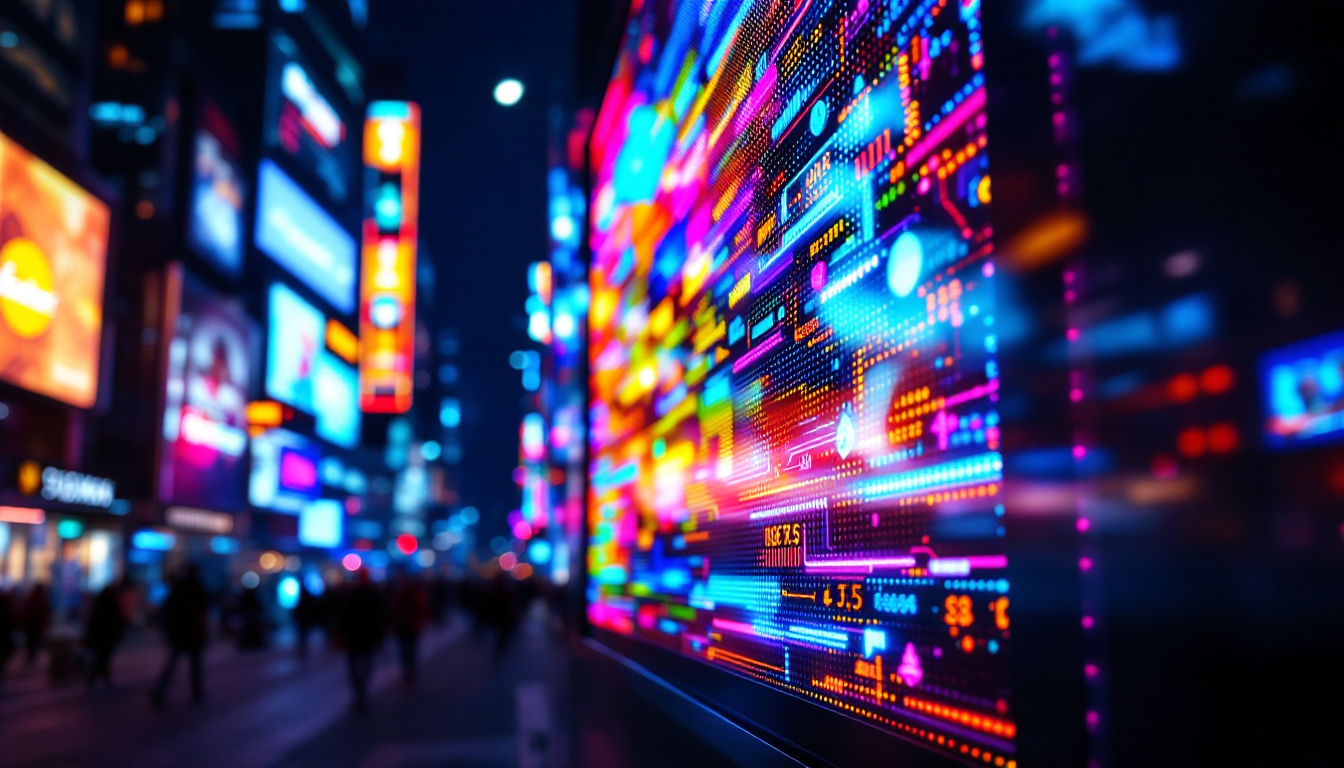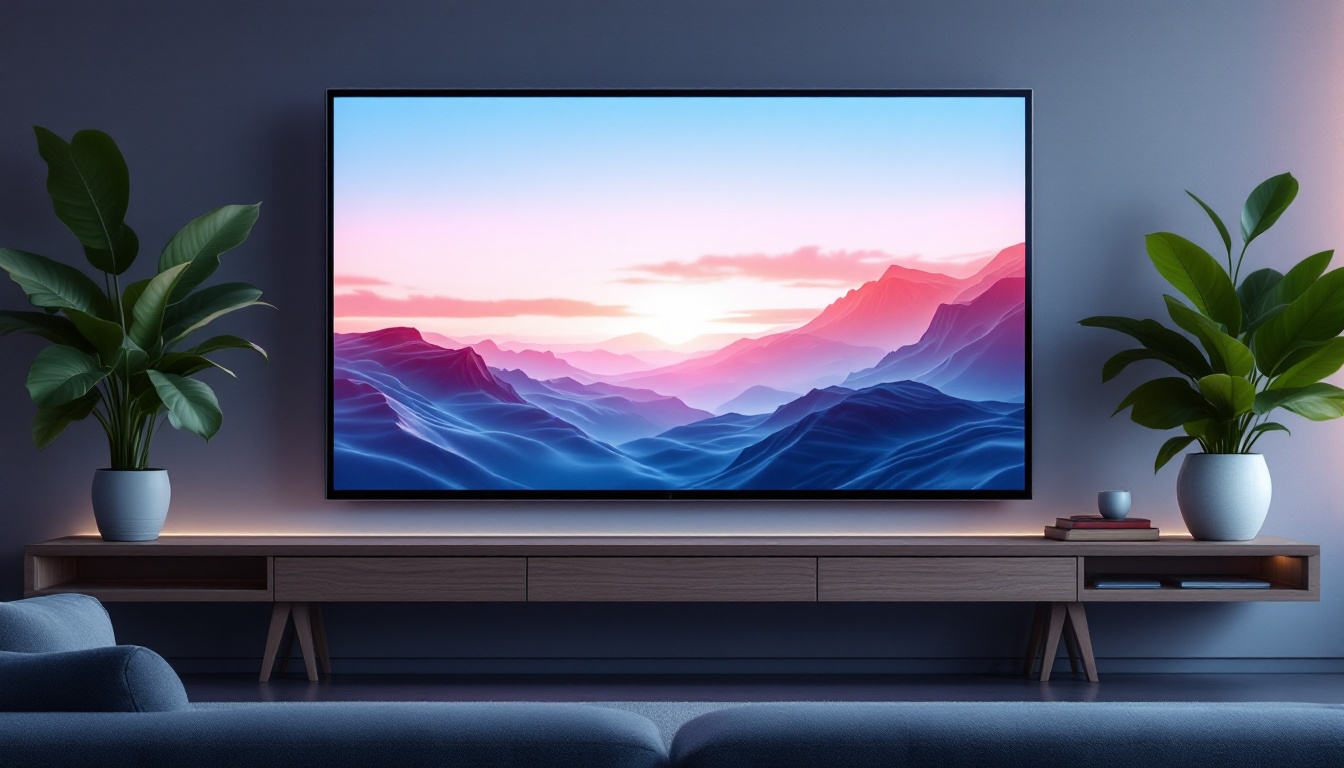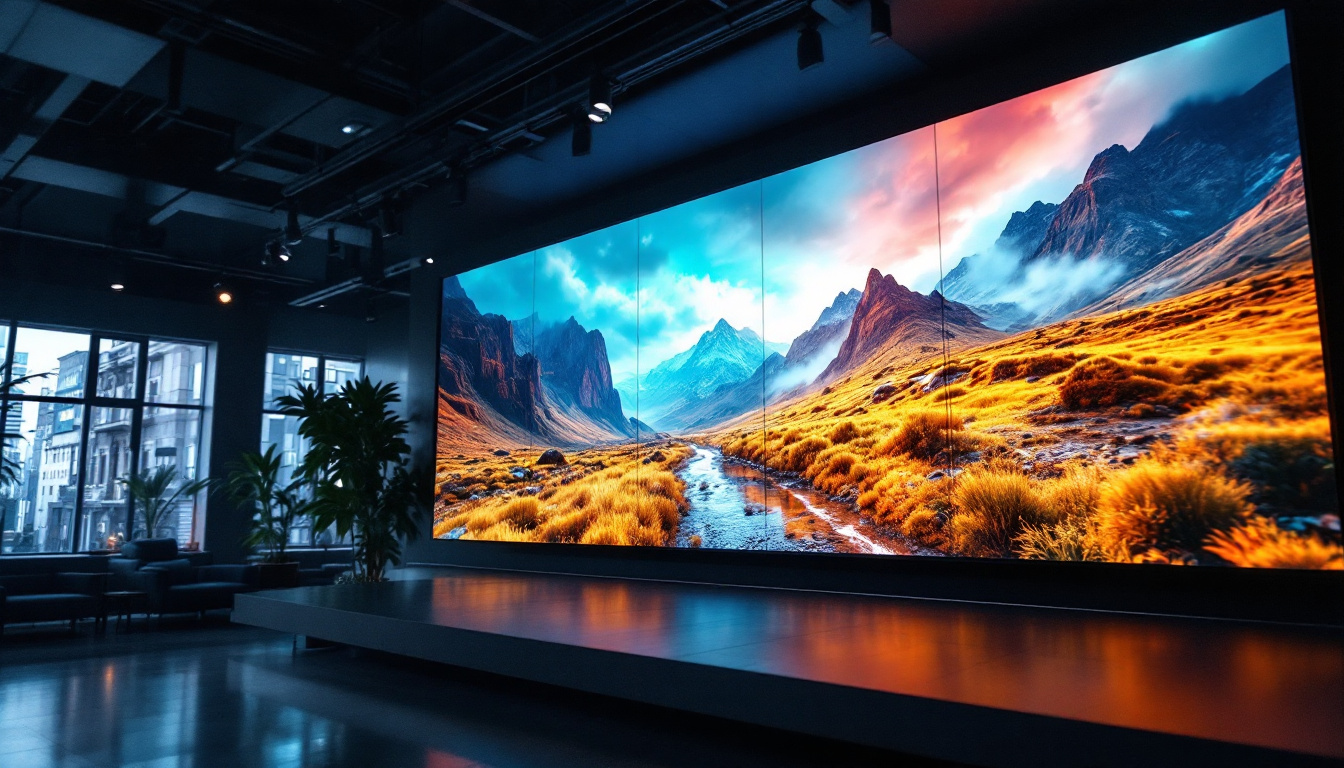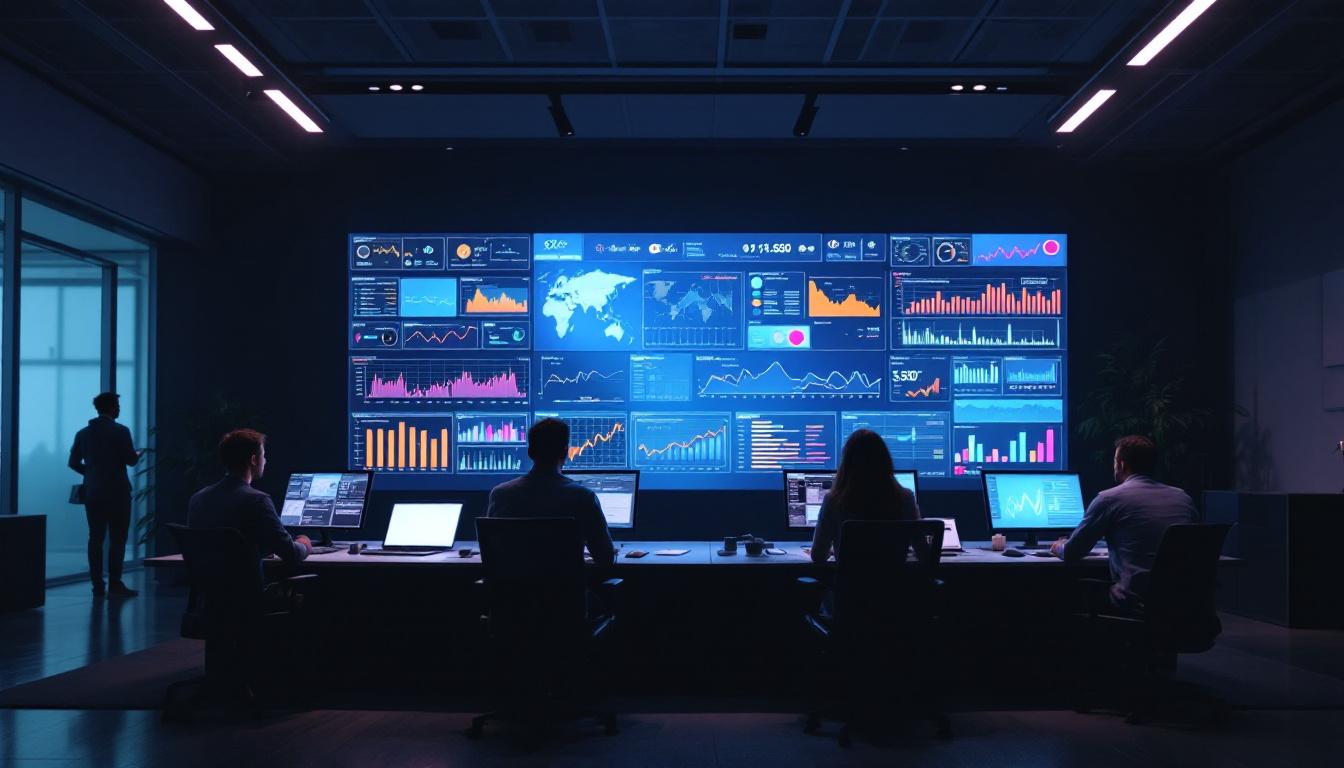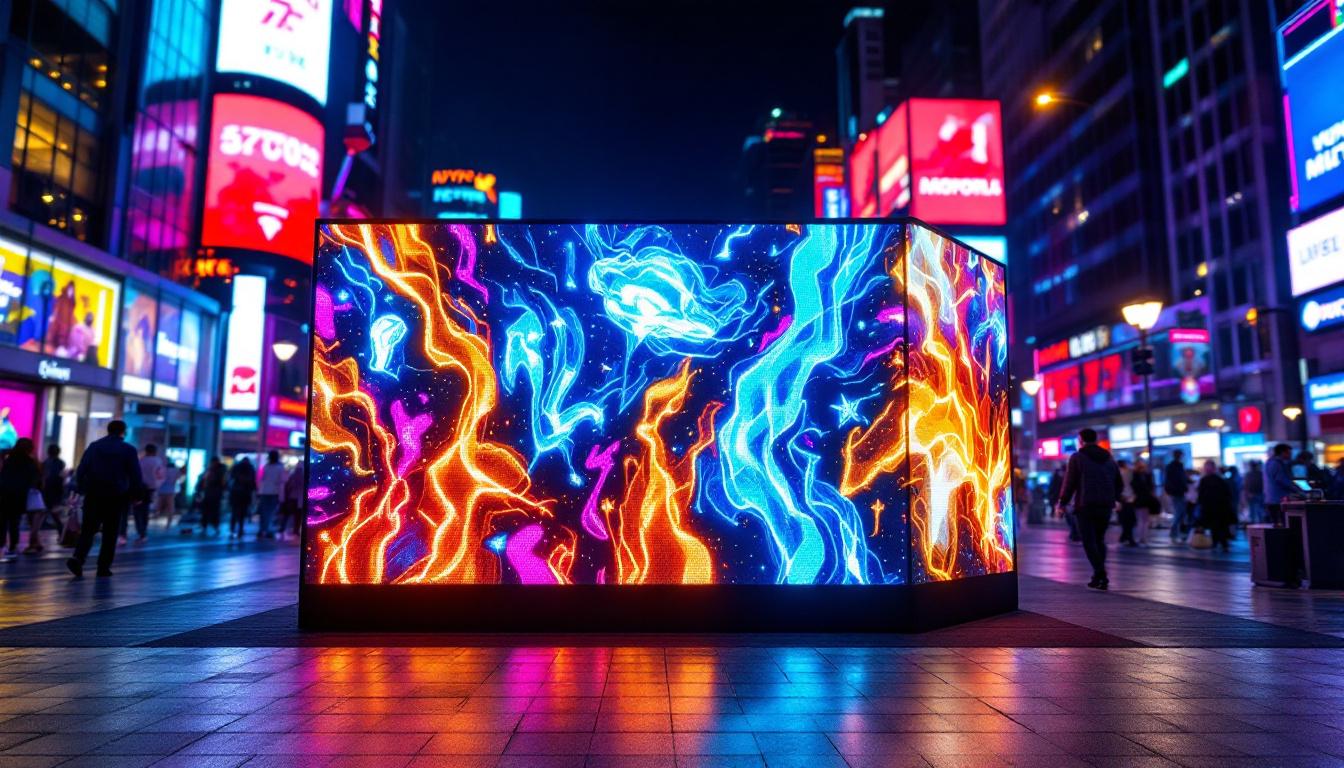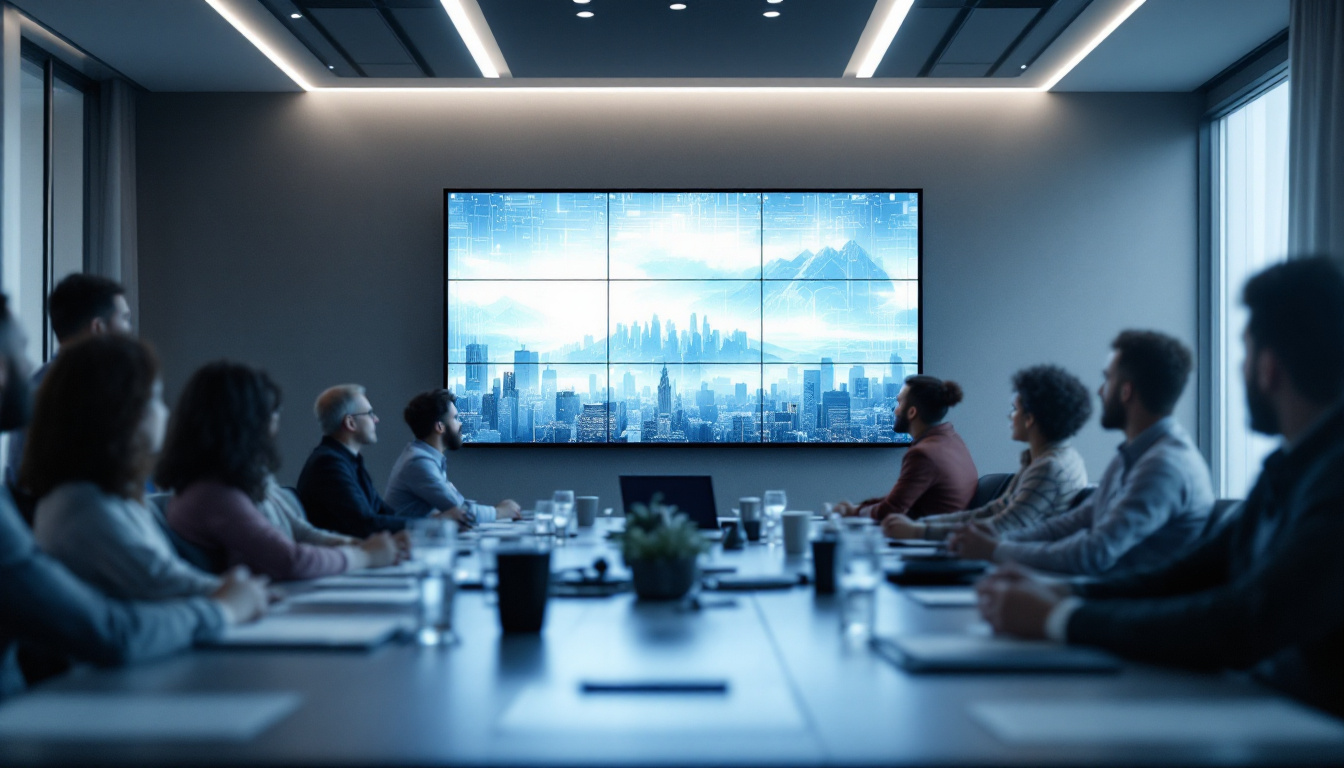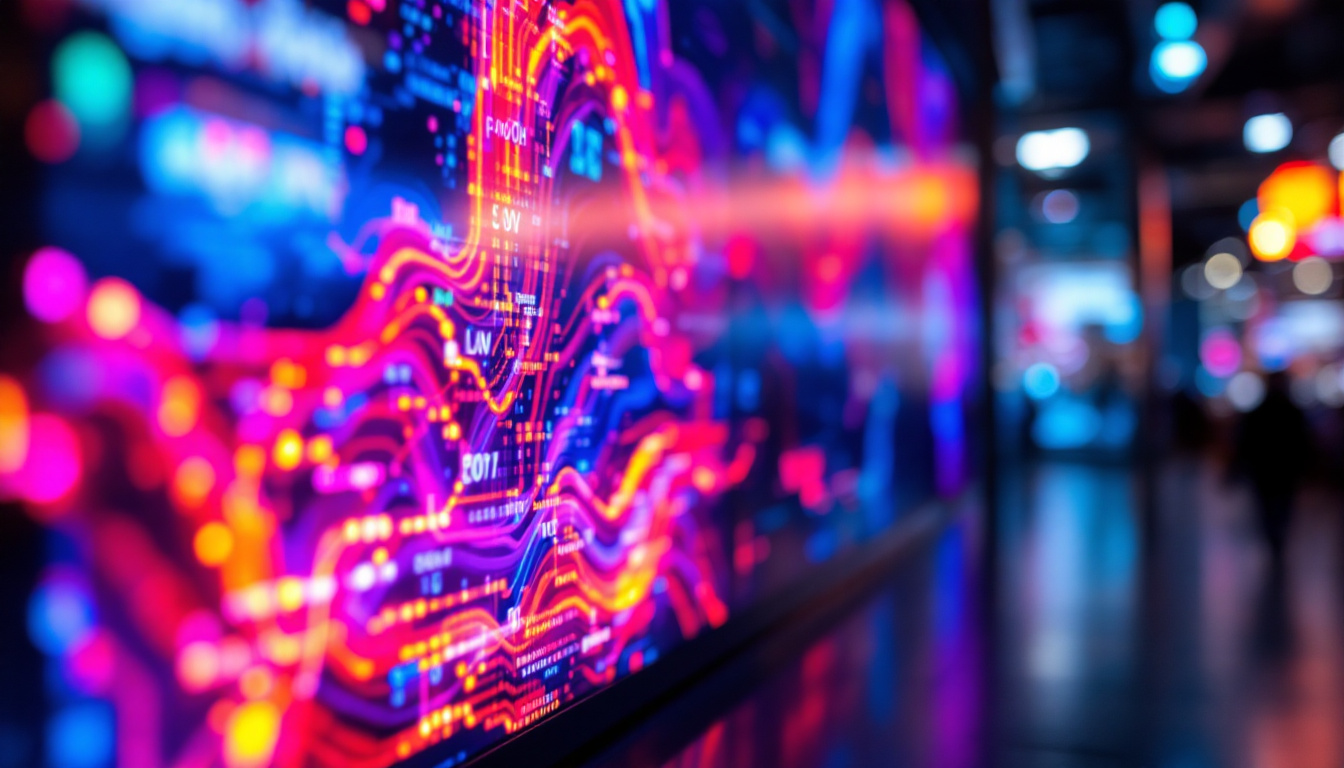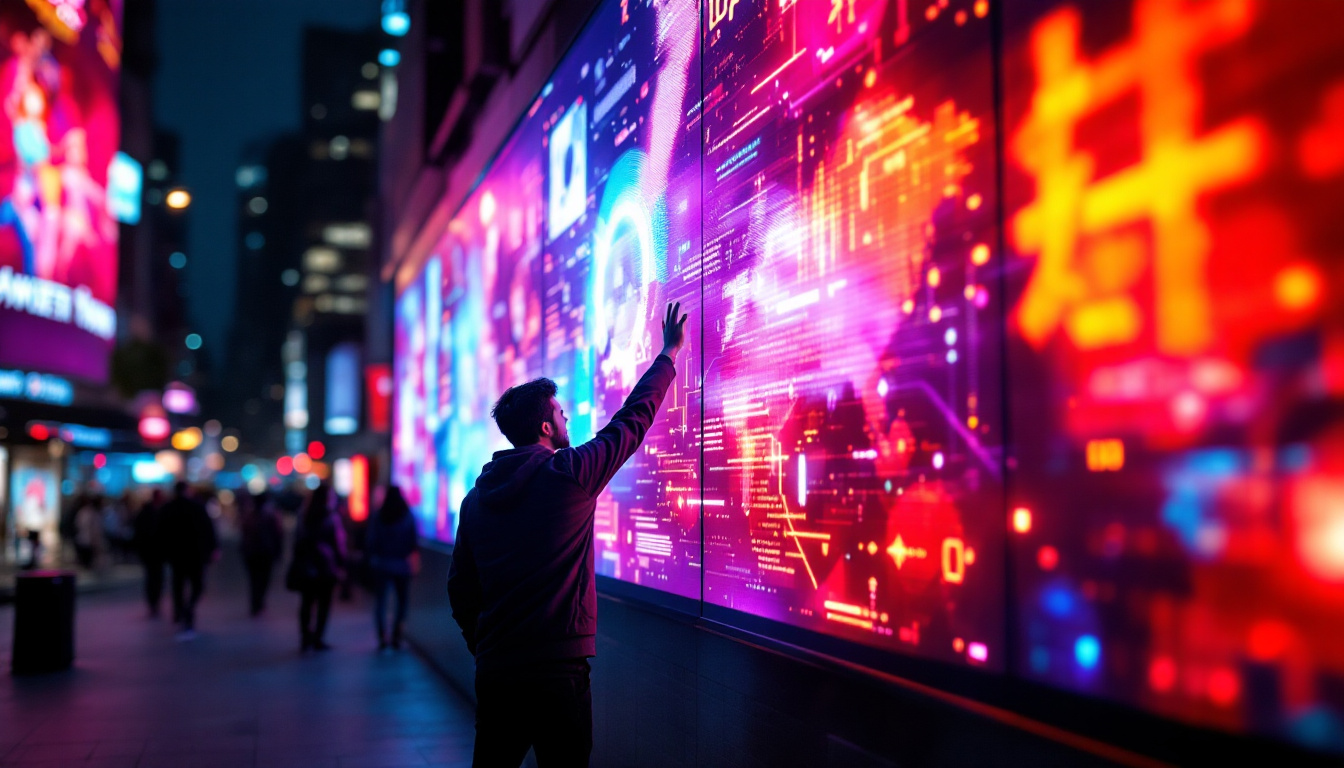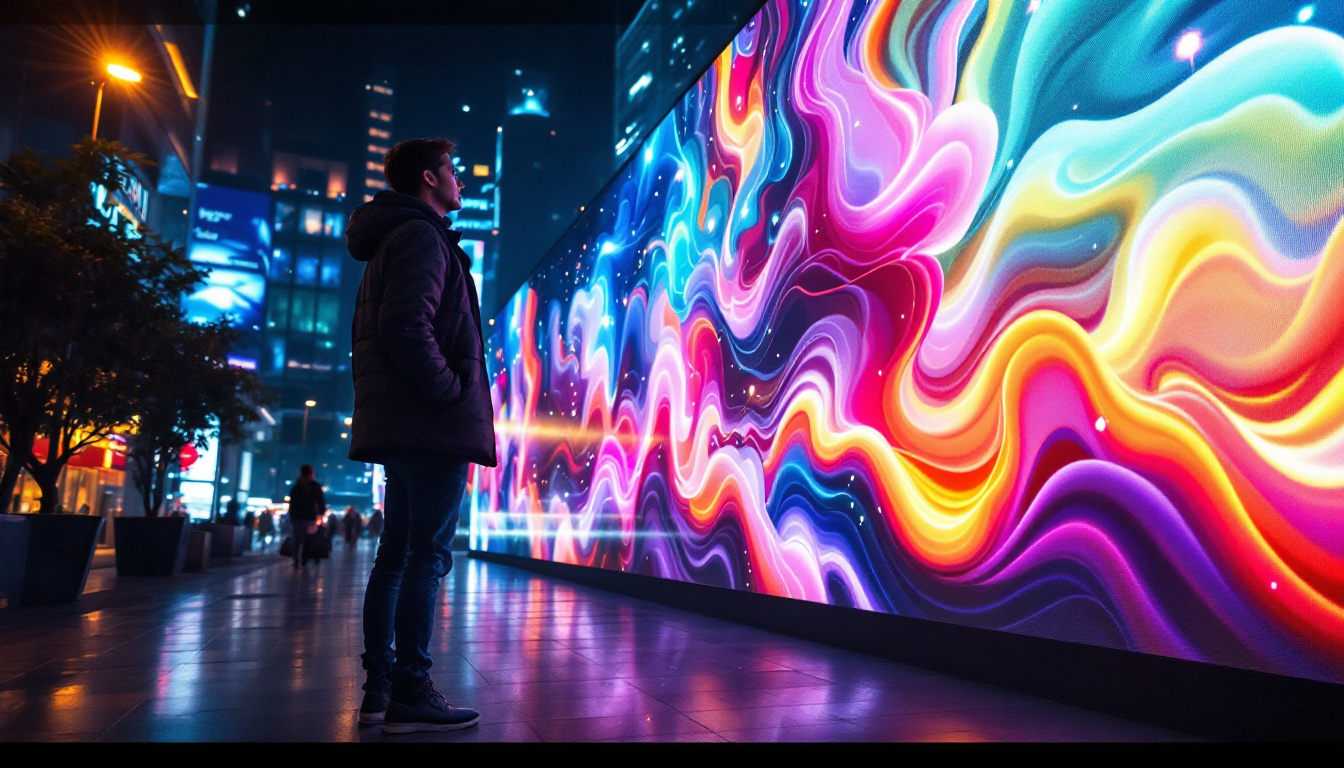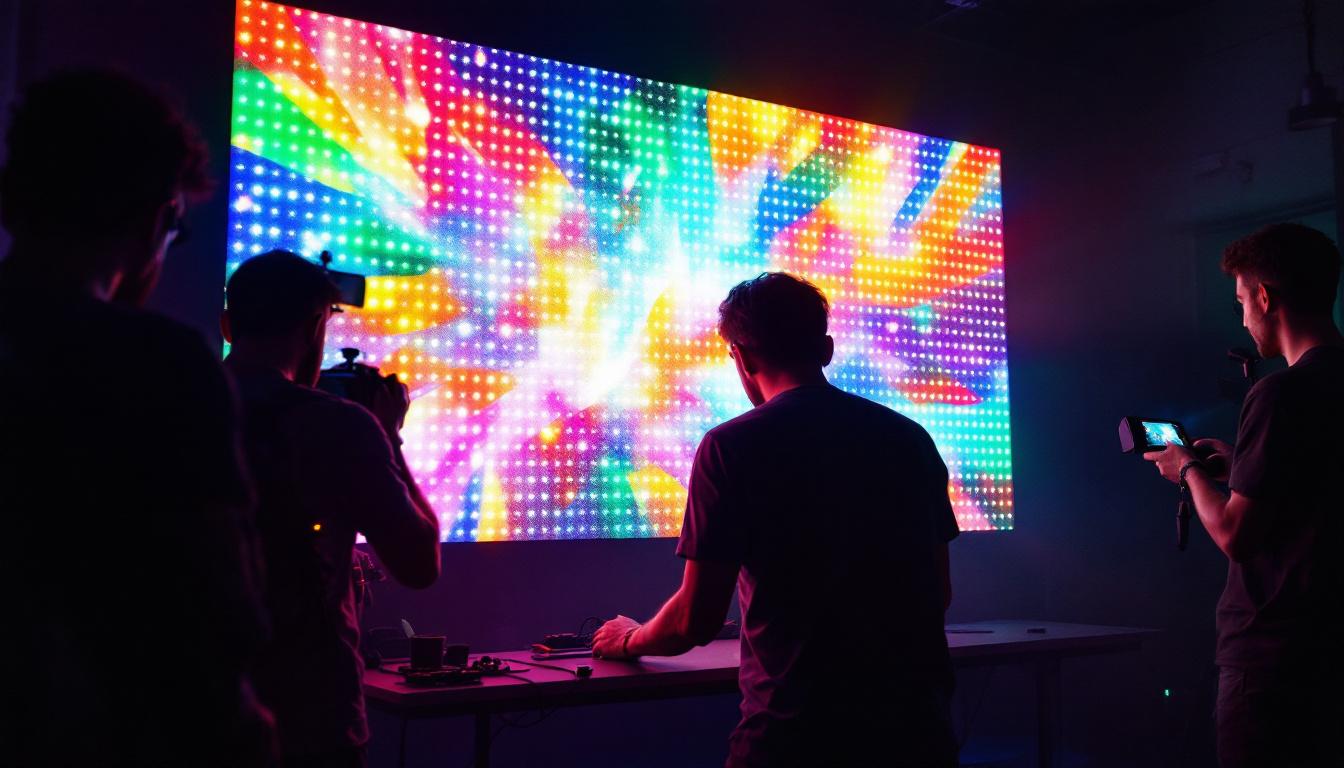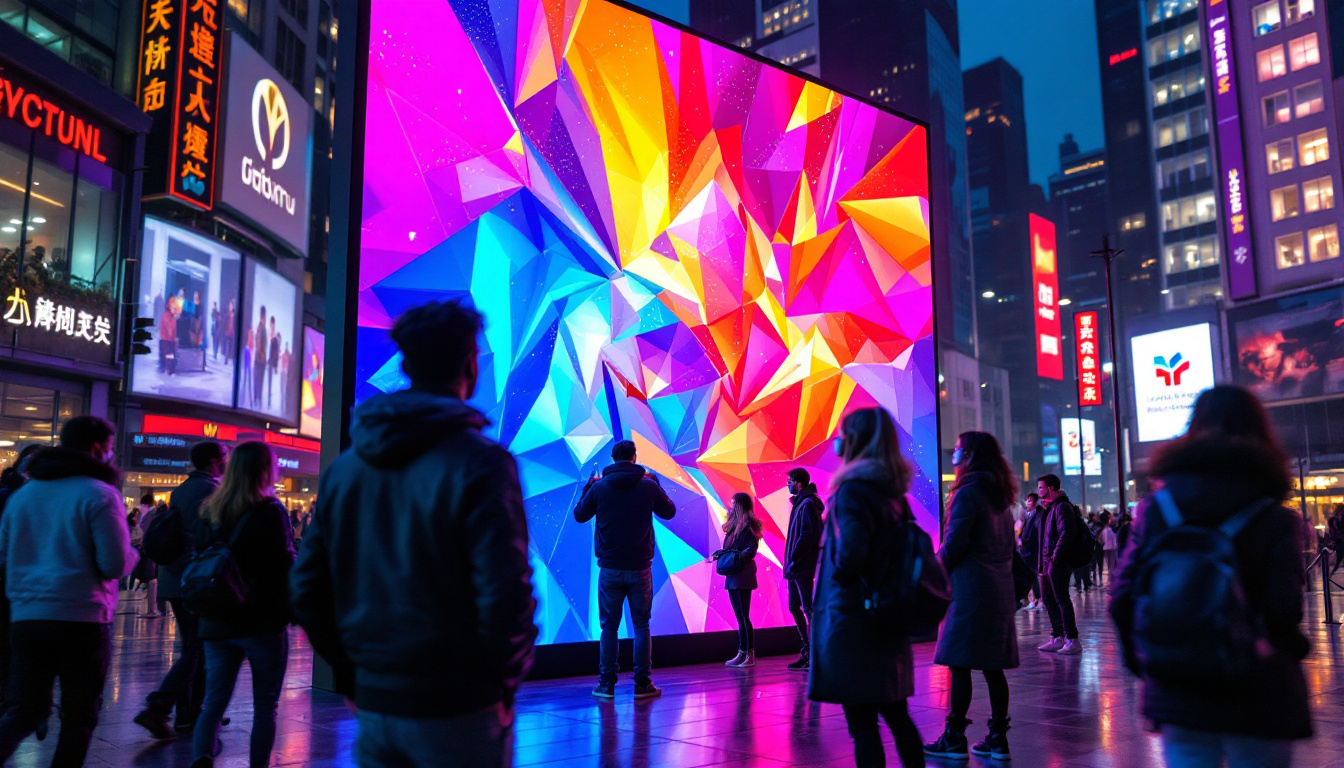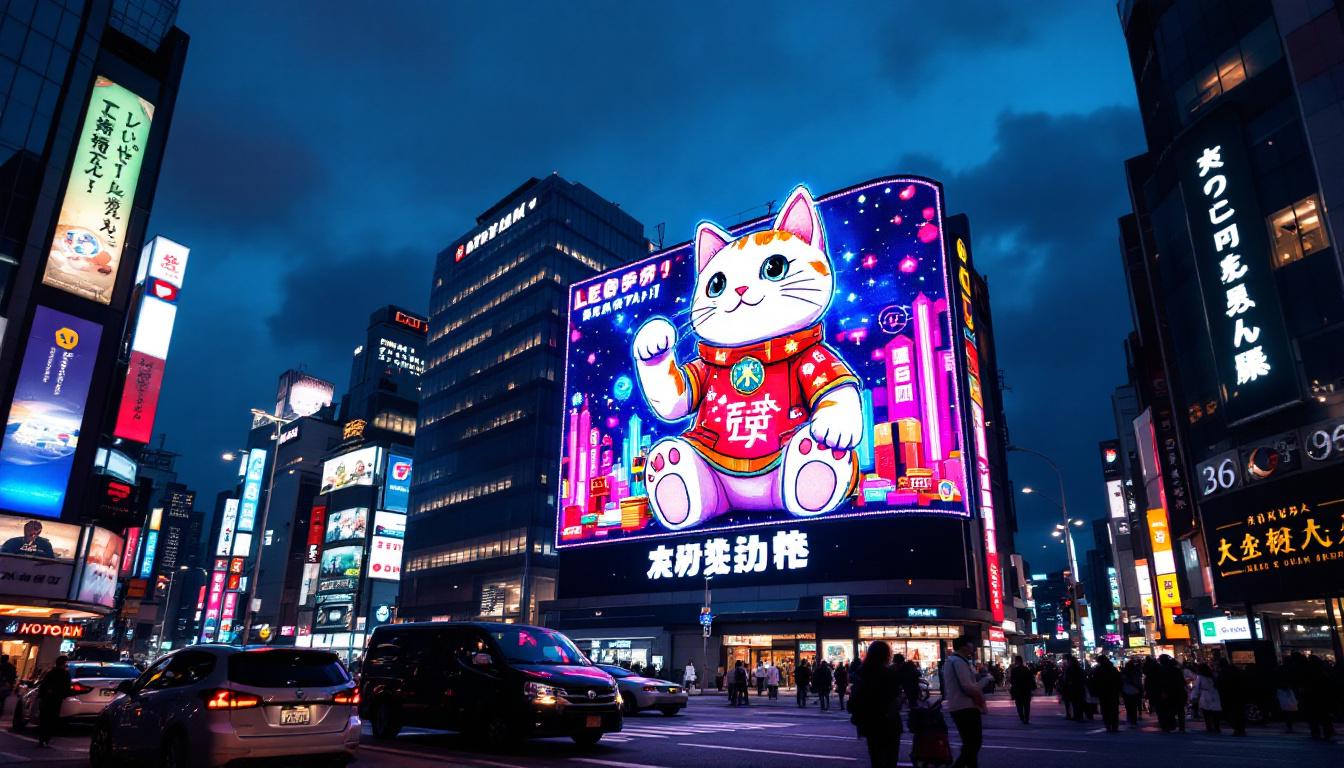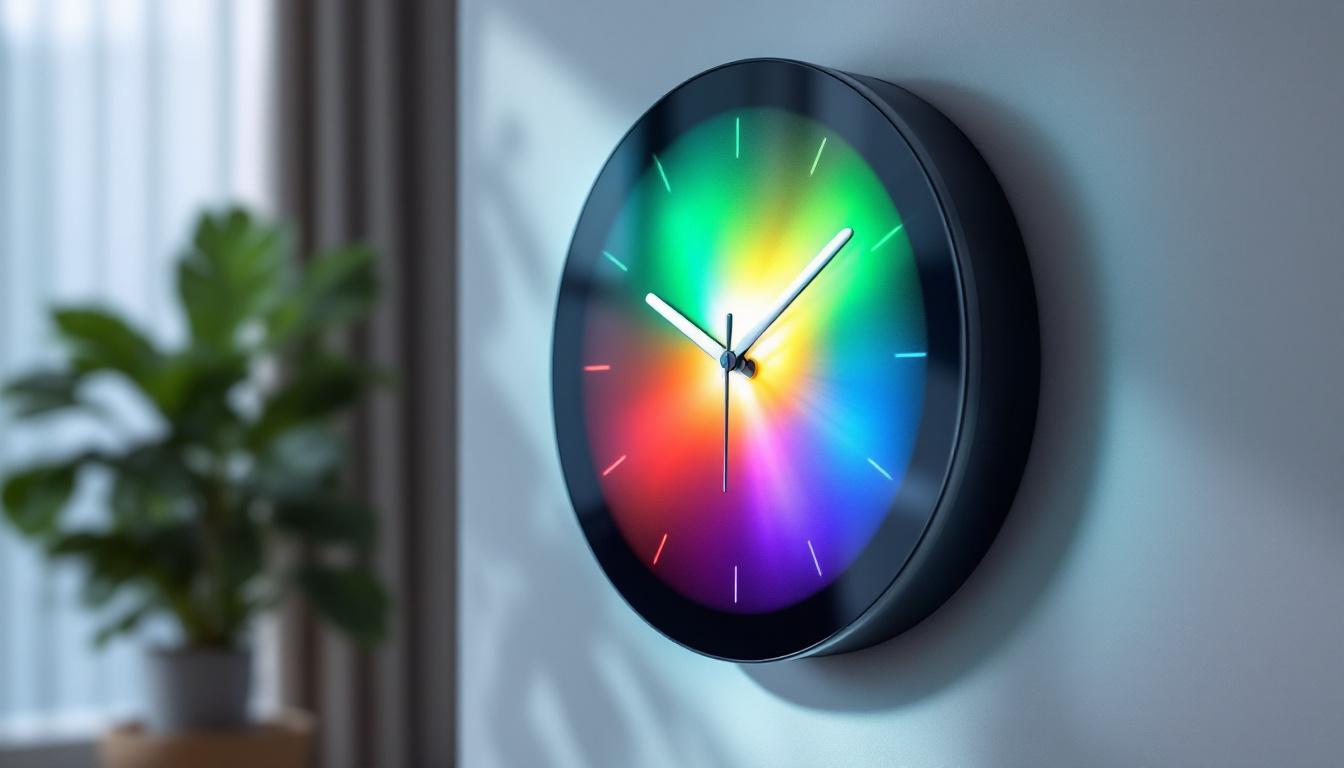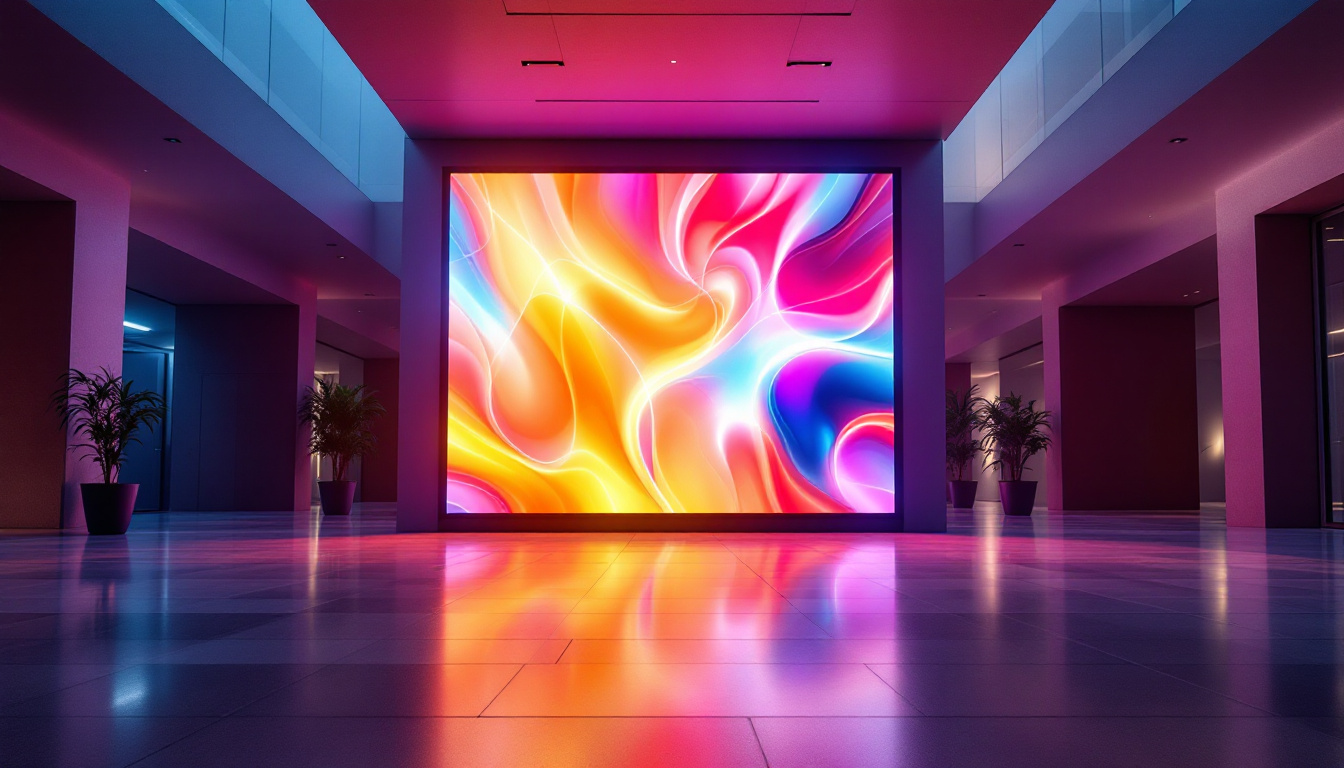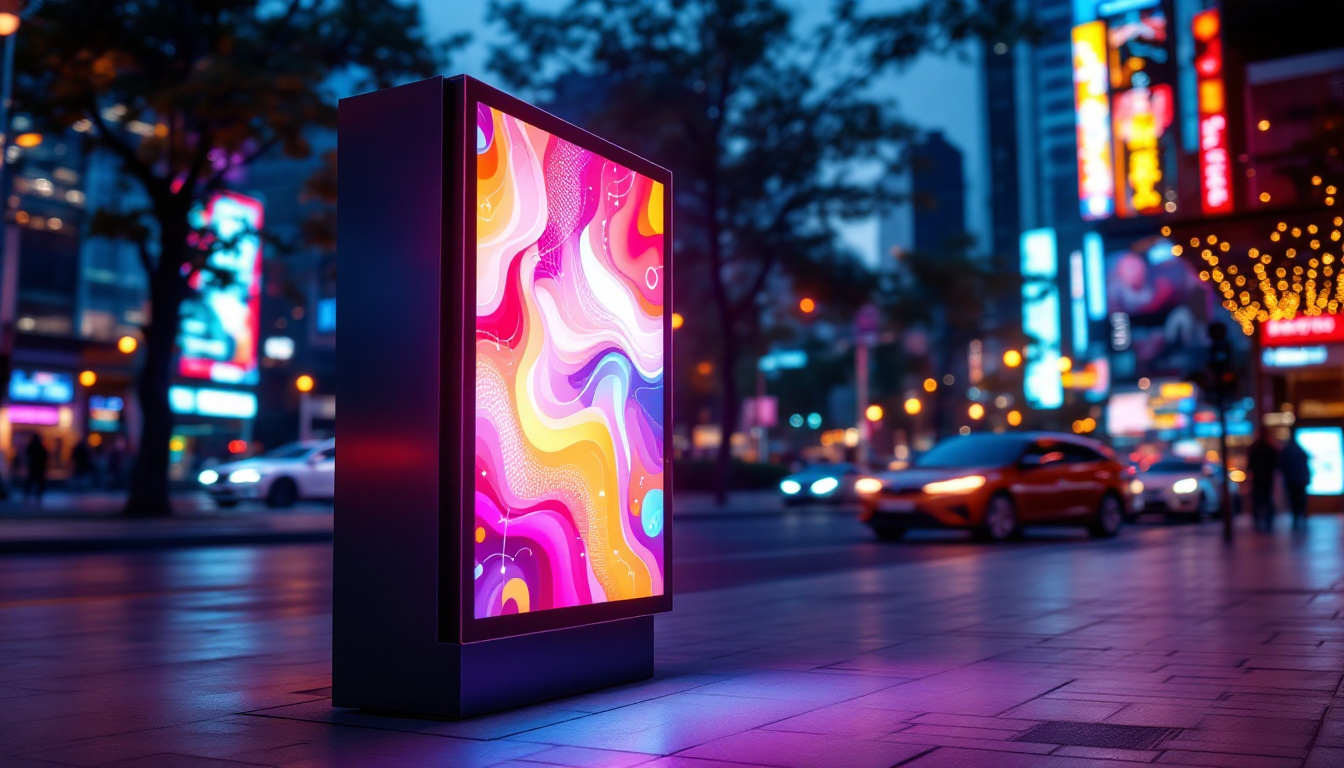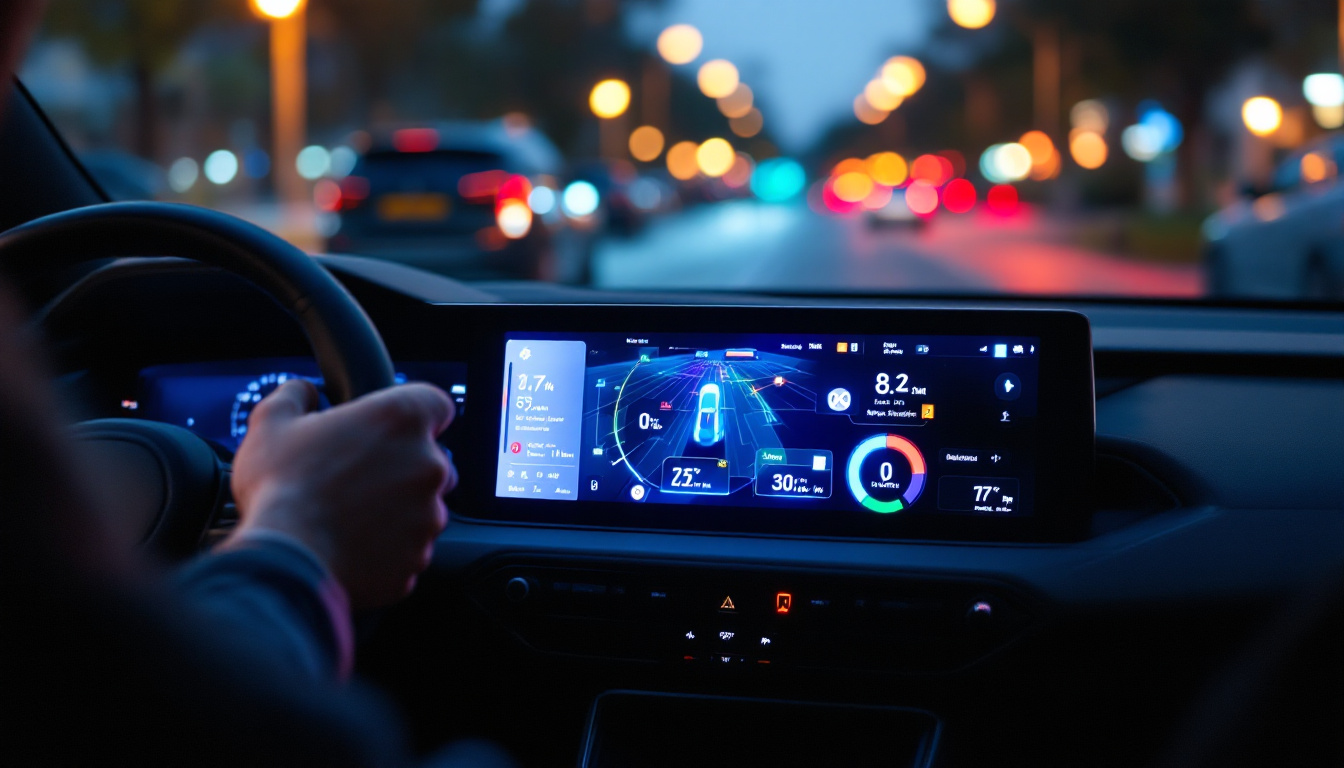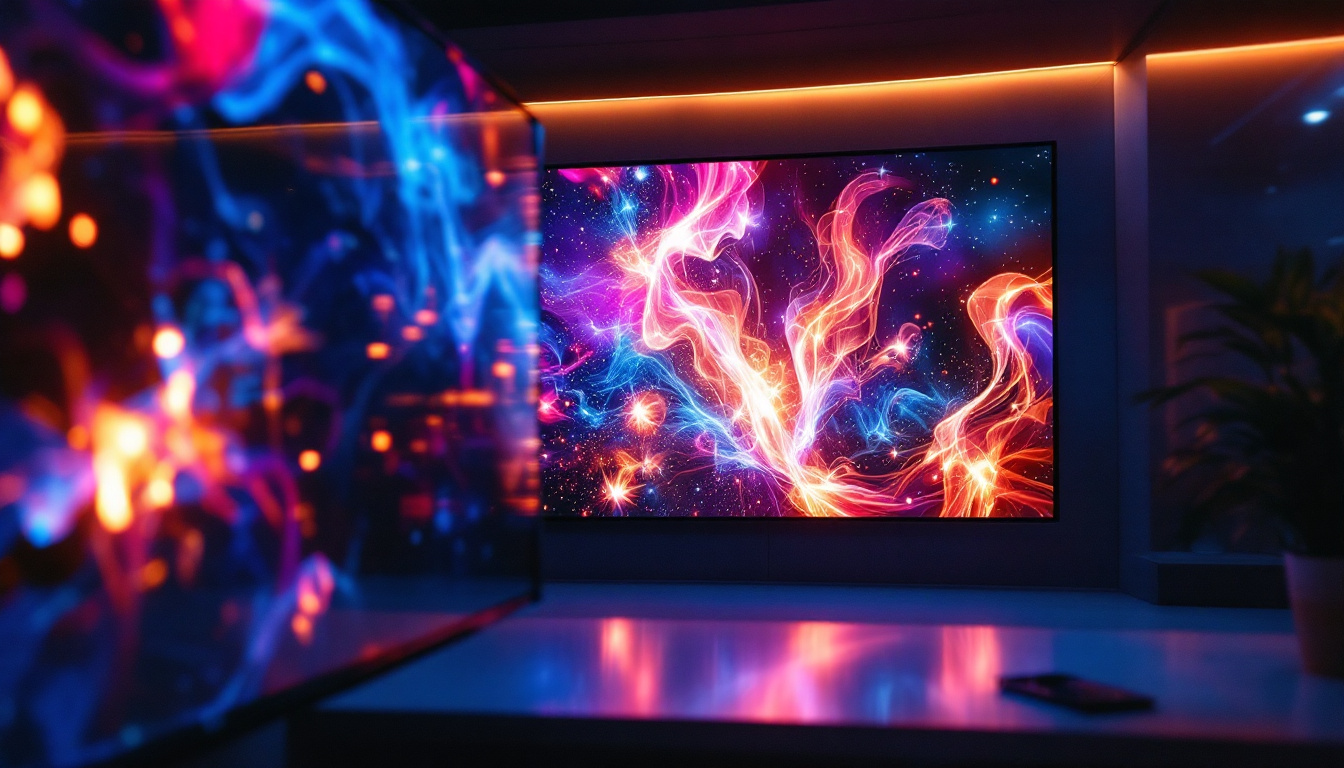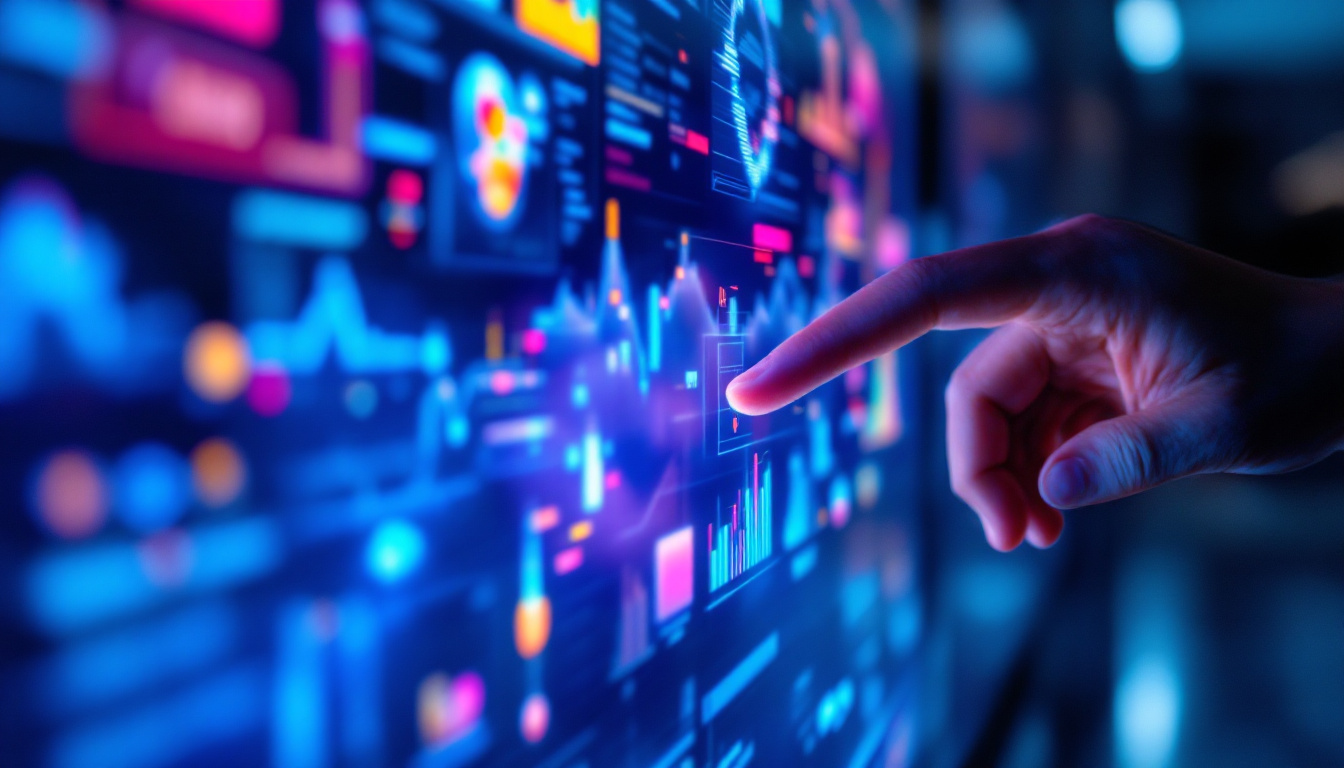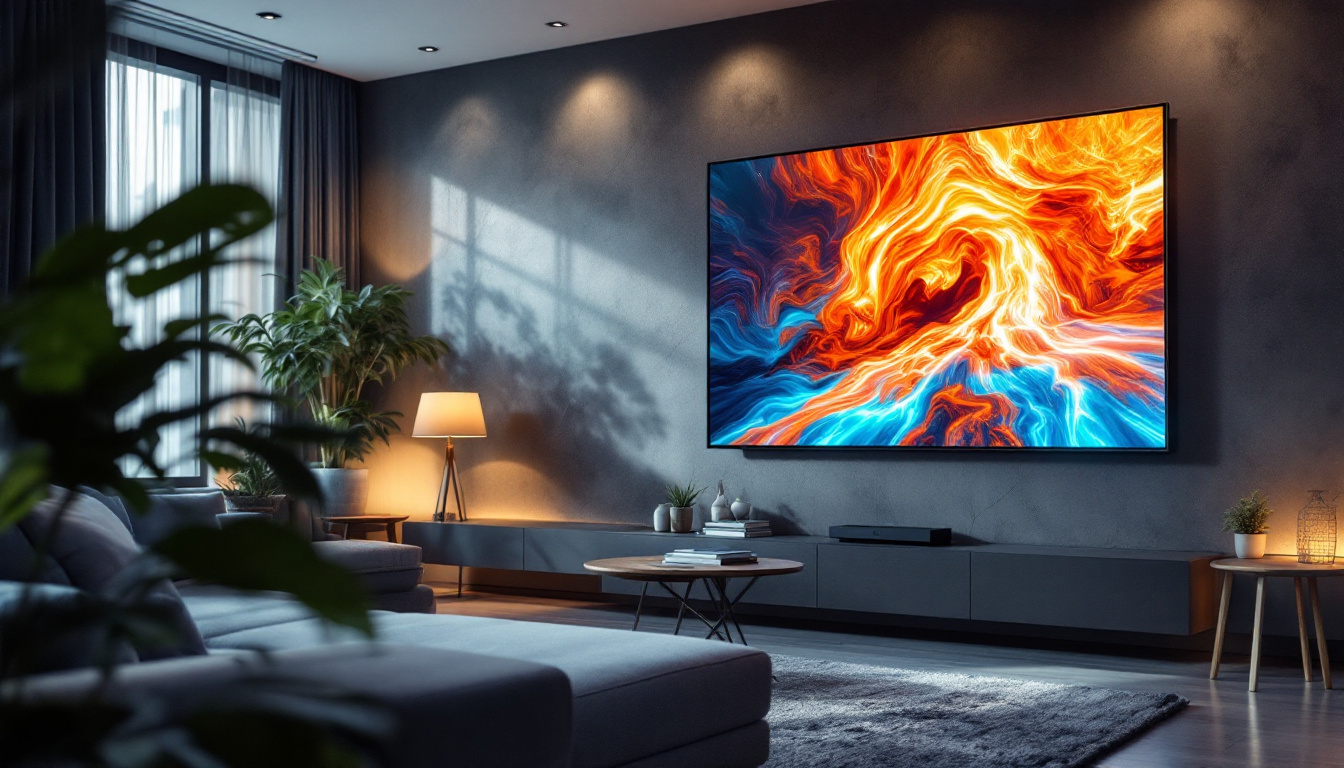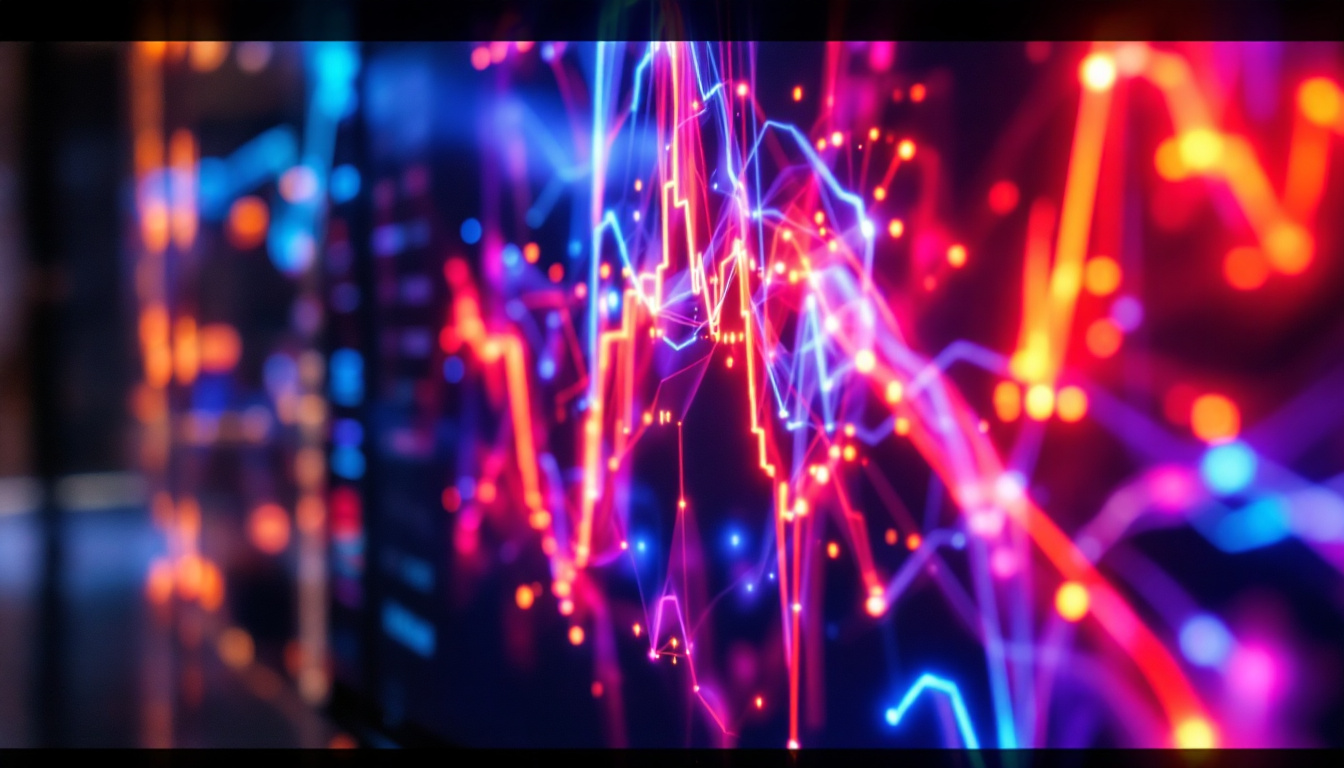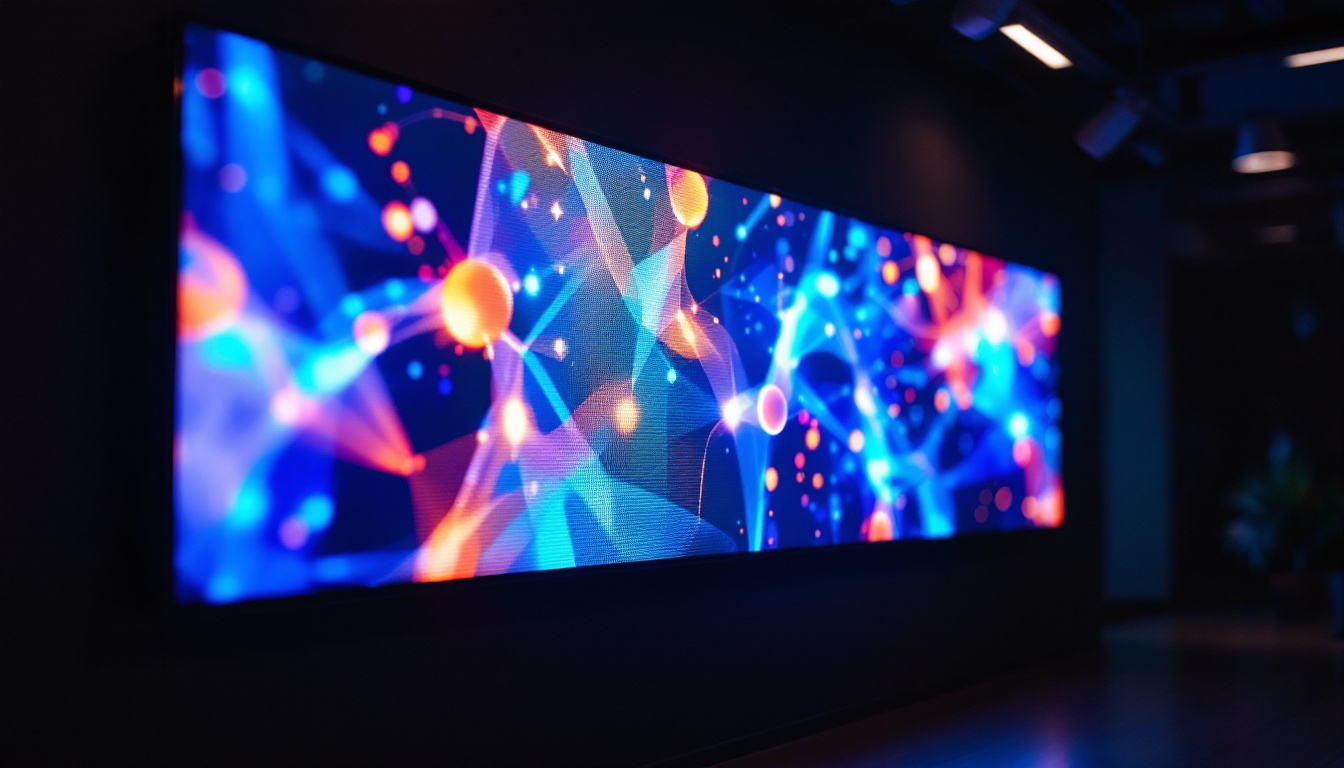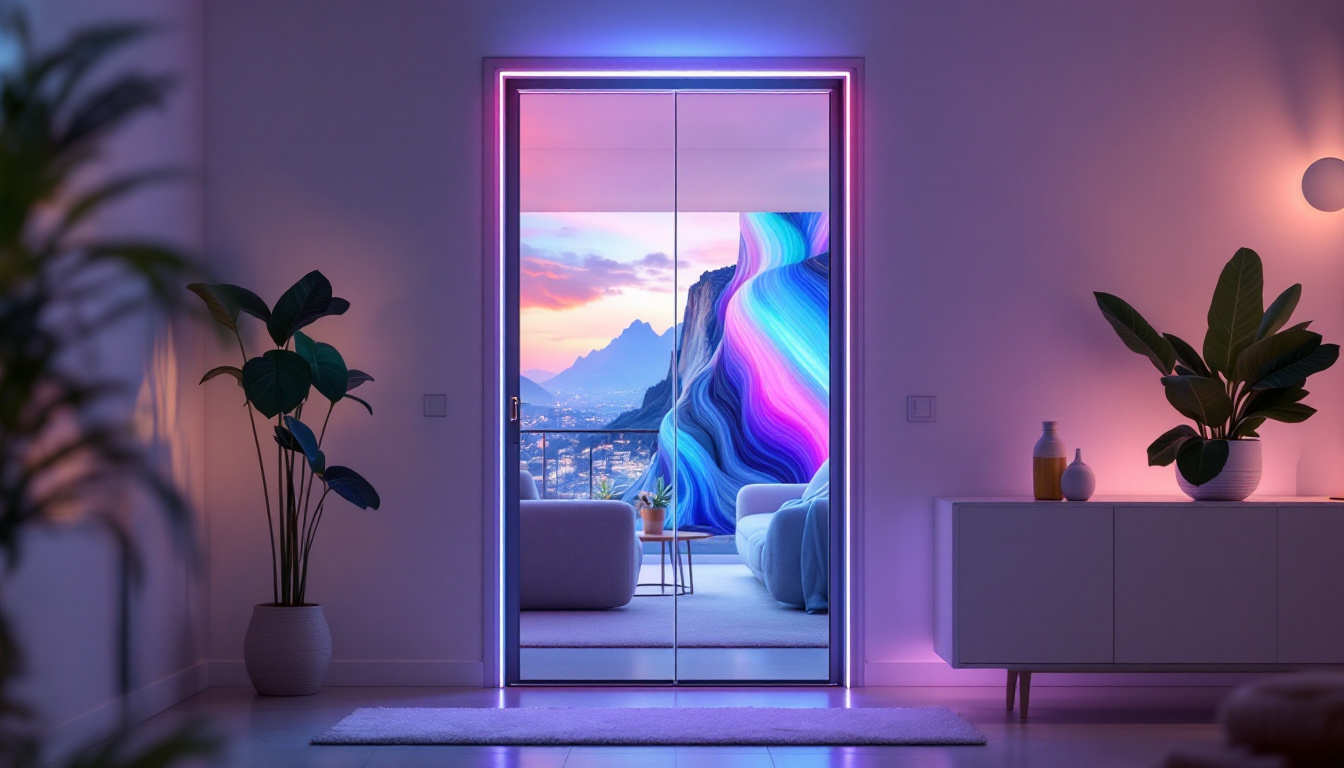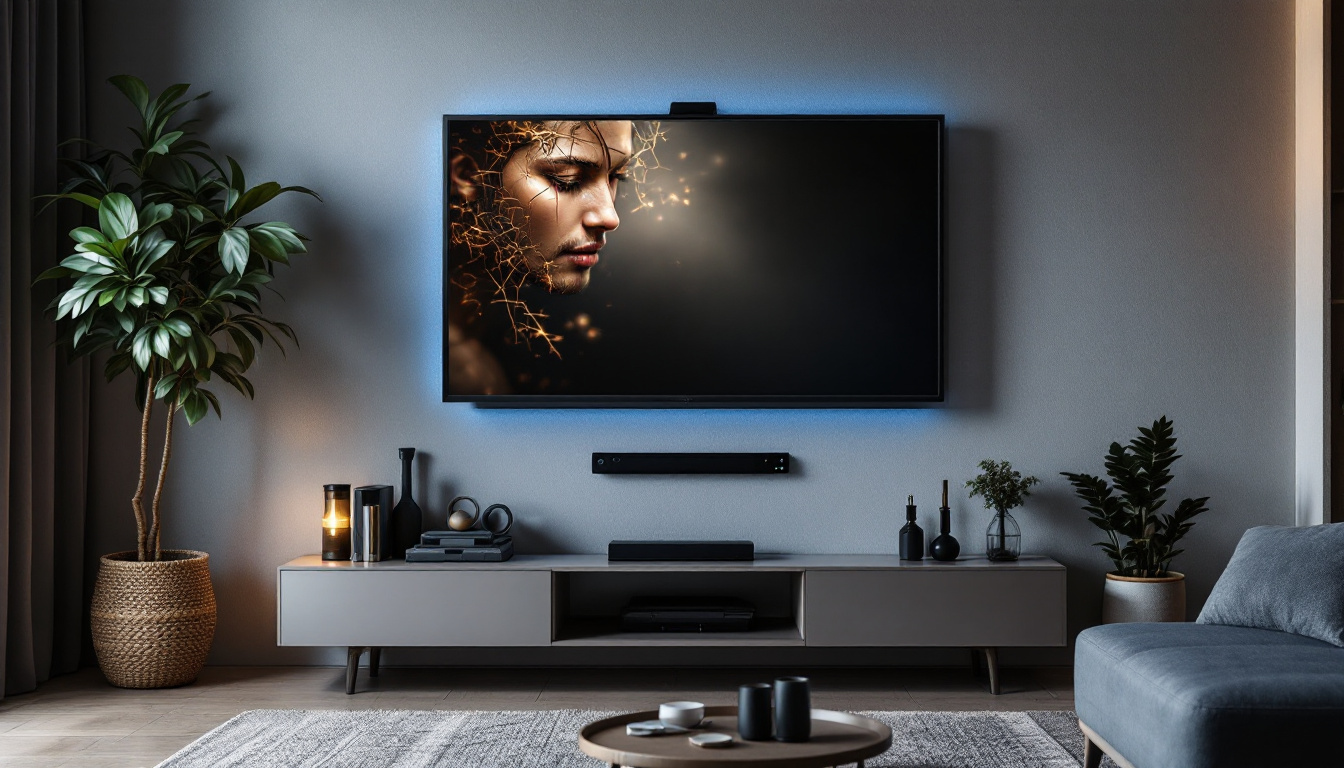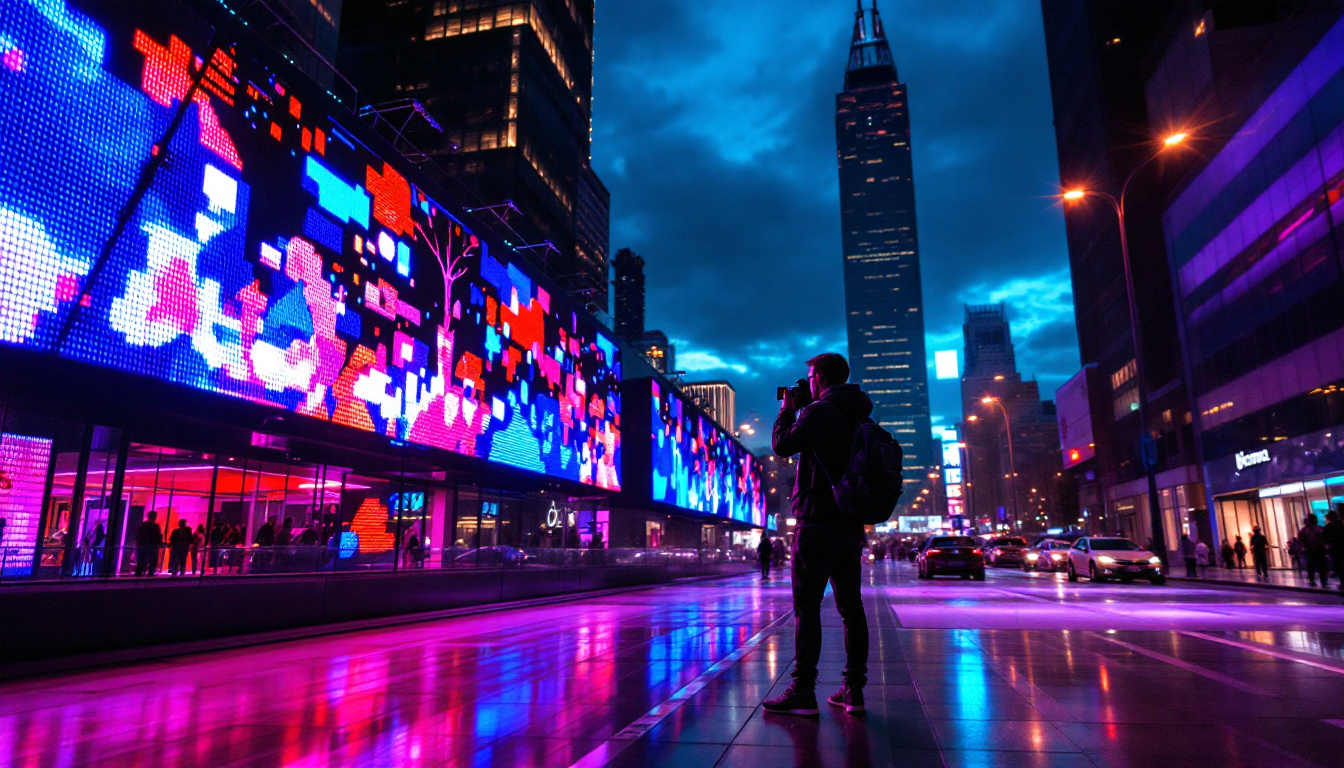In today’s technologically advanced world, LED displays have become ubiquitous, appearing in everything from televisions to billboards. But what exactly does “LED” mean, and how do these displays work? This article delves into the intricacies of LED technology, its applications, and its impact on the visual landscape.
Understanding LED Technology
LED stands for Light Emitting Diode. It is a semiconductor device that emits light when an electric current passes through it. The technology behind LEDs has evolved significantly since their inception, leading to the development of various types of LED displays. Initially, LEDs were primarily used for indicator lights and simple displays, but advancements in technology have expanded their applications into diverse fields such as automotive lighting, architectural illumination, and even horticulture.
The Basics of LED Operation
At its core, an LED consists of a chip made from a combination of materials, typically gallium, arsenide, or gallium phosphide. When electricity flows through the diode, electrons recombine with holes in the semiconductor material, releasing energy in the form of photons. This process is known as electroluminescence. The efficiency of this process has improved over the years, leading to brighter and more energy-efficient LEDs that consume significantly less power than traditional incandescent bulbs.
Different materials can produce different colors of light, which is why LEDs can be found in a wide range of hues. The color of the emitted light is determined by the bandgap energy of the semiconductor material used in the LED. Additionally, advancements in technology have led to the creation of white LEDs, which are commonly produced by combining blue LEDs with phosphor coatings that convert some of the blue light into yellow, resulting in a broad spectrum of white light suitable for various lighting applications.
Types of LED Displays
LED displays come in various forms, each suited to different applications. The most common types include:
- Direct View LED Displays: These are made up of individual LEDs that form the entire display surface. They are commonly used in outdoor advertising and large-scale screens, providing vibrant colors and high brightness levels that are easily visible even in direct sunlight.
- LED-backlit LCD Displays: These displays use LEDs to illuminate an LCD panel. They are prevalent in televisions and computer monitors, providing better contrast and energy efficiency compared to traditional fluorescent backlighting. The use of local dimming technology in these displays allows for deeper blacks and enhanced picture quality, making them a popular choice for home entertainment systems.
- Organic LED (OLED) Displays: Utilizing organic compounds, OLEDs can emit their own light, allowing for thinner displays with superior color accuracy and contrast ratios. This technology has revolutionized the way we experience visuals, particularly in smartphones and high-end televisions, where the ability to achieve true blacks and vibrant colors enhances the viewing experience.
Furthermore, the versatility of LED technology has led to innovations such as flexible LED displays, which can be bent or shaped to fit various designs, and transparent LED displays, which allow for creative advertising solutions that do not obstruct views. These advancements continue to push the boundaries of what is possible in display technology, making LEDs an integral part of modern visual communication.
Applications of LED Displays
The versatility of LED technology has led to its widespread adoption across various sectors. From entertainment to advertising, the applications of LED displays are vast and varied.
Advertising and Marketing
One of the most prominent uses of LED displays is in advertising. Billboards and digital signage have transformed the way brands communicate with consumers. The bright, vibrant colors and dynamic content of LED displays capture attention more effectively than traditional static signs.
Moreover, LED displays can be programmed to change content in real-time, allowing for targeted advertising based on time of day, audience demographics, or even weather conditions. This adaptability makes them an invaluable tool for marketers. For instance, a restaurant can display breakfast specials in the morning and switch to dinner promotions in the evening, optimizing their advertising strategy throughout the day. Additionally, the interactive capabilities of some LED displays allow consumers to engage with the content, such as participating in polls or contests, further enhancing brand interaction.
Entertainment and Events
In the entertainment industry, LED displays are used in concerts, sporting events, and theater productions. Their ability to produce bright, high-resolution images makes them ideal for large venues where visibility is crucial.
Additionally, LED screens can be configured in various shapes and sizes, allowing for creative designs that enhance the audience’s experience. From massive video walls to intricate stage backdrops, LED technology has revolutionized event production. The integration of LED displays in live performances not only provides stunning visuals but also allows for seamless transitions and effects that can synchronize with music and performances. This capability has led to more immersive experiences, where audiences feel a deeper connection to the event, as the visuals complement the emotional tone of the performance.
Public Information and Transportation
LED displays are also widely used in public transportation systems to provide real-time information to passengers. Bus and train stations often feature LED screens that display arrival and departure times, service updates, and other essential information.
This use of LED technology enhances the efficiency of public transport systems, ensuring that commuters are well-informed and can plan their journeys accordingly. Furthermore, the implementation of LED displays in transportation extends to wayfinding systems in airports and large transit hubs, guiding passengers through complex environments with clarity. The bright, legible text and graphics help reduce confusion and improve the overall travel experience, making it easier for individuals to navigate their routes, especially in high-traffic areas. Additionally, some systems incorporate multilingual displays, catering to diverse populations and enhancing accessibility for international travelers.
Benefits of LED Displays
The advantages of using LED displays extend beyond their vibrant colors and dynamic content. Several key benefits make them a preferred choice for many applications.
Energy Efficiency
One of the most significant benefits of LED technology is its energy efficiency. LEDs consume significantly less power compared to traditional lighting solutions, such as incandescent or fluorescent bulbs. This not only reduces electricity costs but also minimizes the environmental impact.
In addition, the longevity of LEDs means they need to be replaced less frequently, further contributing to energy savings and reducing waste.
Brightness and Visibility
LED displays are known for their brightness, making them suitable for both indoor and outdoor use. Their ability to maintain visibility in direct sunlight is a critical advantage for outdoor advertising and public information displays.
Furthermore, the high contrast ratios of LED screens enhance image clarity, ensuring that content is easily readable from various distances and angles.
Durability and Reliability
LED displays are built to withstand harsh conditions, making them durable and reliable. Unlike traditional displays, which may be susceptible to damage from impact or weather, LEDs are more robust and can function effectively in various environments.
This durability translates to lower maintenance costs and longer lifespans, making LED displays a sound investment for businesses and organizations.
Challenges and Considerations
Despite their numerous advantages, LED displays are not without challenges. Understanding these can help users make informed decisions when considering LED technology.
Initial Costs
While the long-term savings associated with LED displays are significant, the initial investment can be higher than traditional display technologies. This upfront cost can be a barrier for some businesses, particularly small enterprises.
However, it is essential to consider the total cost of ownership, which includes energy savings, maintenance costs, and the potential for increased revenue through enhanced advertising capabilities.
Heat Generation
LED displays can generate heat during operation, which may affect their performance and longevity if not properly managed. Adequate cooling systems are necessary to ensure that the displays function optimally and do not overheat.
Proper installation and maintenance are crucial to mitigating this issue and ensuring that the LED displays remain efficient and effective over time.
Color Calibration and Quality Control
Maintaining consistent color quality across LED displays can be challenging, especially in large installations where multiple screens are used together. Color calibration is essential to ensure that all displays match in brightness and hue.
Regular quality control checks can help identify any discrepancies and ensure that the displays continue to perform at their best, providing a seamless viewing experience.
The Future of LED Displays
The future of LED technology looks promising, with ongoing advancements and innovations that are set to enhance its capabilities further. As technology evolves, so too do the possibilities for LED displays.
Emerging Technologies
New developments in LED technology, such as MicroLED and MiniLED, are paving the way for even more advanced displays. These technologies offer improved resolution, color accuracy, and energy efficiency, pushing the boundaries of what is possible in display technology.
MicroLED, for instance, consists of tiny individual LEDs that can create stunningly detailed images, while MiniLED technology enhances traditional LCD displays with better contrast and brightness.
Integration with Smart Technology
As the world becomes increasingly connected, the integration of LED displays with smart technology is becoming more prevalent. Smart LED displays can be connected to the internet, allowing for real-time content updates, data analytics, and interactive features.
This integration opens up new possibilities for advertising and information dissemination, enabling businesses to engage with their audiences in innovative ways.
Sustainability Initiatives
With growing concerns about environmental sustainability, the LED industry is also focusing on developing eco-friendly practices. This includes improving the recyclability of LED components and reducing the use of hazardous materials in manufacturing.
As consumers become more environmentally conscious, the demand for sustainable LED solutions is likely to increase, prompting further innovation in this area.
Conclusion
LED displays have transformed the way information is presented and consumed in the modern world. From their energy efficiency and durability to their vibrant colors and versatility, the benefits of LED technology are undeniable.
As advancements continue to shape the future of LED displays, it is crucial for businesses and organizations to stay informed about the latest developments and consider how they can leverage this technology to enhance their operations and engage their audiences effectively.
Whether in advertising, entertainment, or public information, LED displays are set to remain a key player in the visual communication landscape for years to come.
Illuminate Your Space with LumenMatrix
As you consider the vast possibilities and future of LED displays, remember that the right technology can make all the difference. LumenMatrix stands at the forefront of LED innovation, offering a diverse range of solutions tailored to meet your needs. Whether you’re looking to enhance your brand’s visibility, create an immersive environment, or deliver dynamic content, our Indoor and Outdoor LED Wall Displays, Vehicle LED Displays, and other specialized options are designed to captivate and engage. Embrace the LED revolution and check out LumenMatrix LED Display Solutions to discover how our cutting-edge displays can transform your visual communication strategy.

